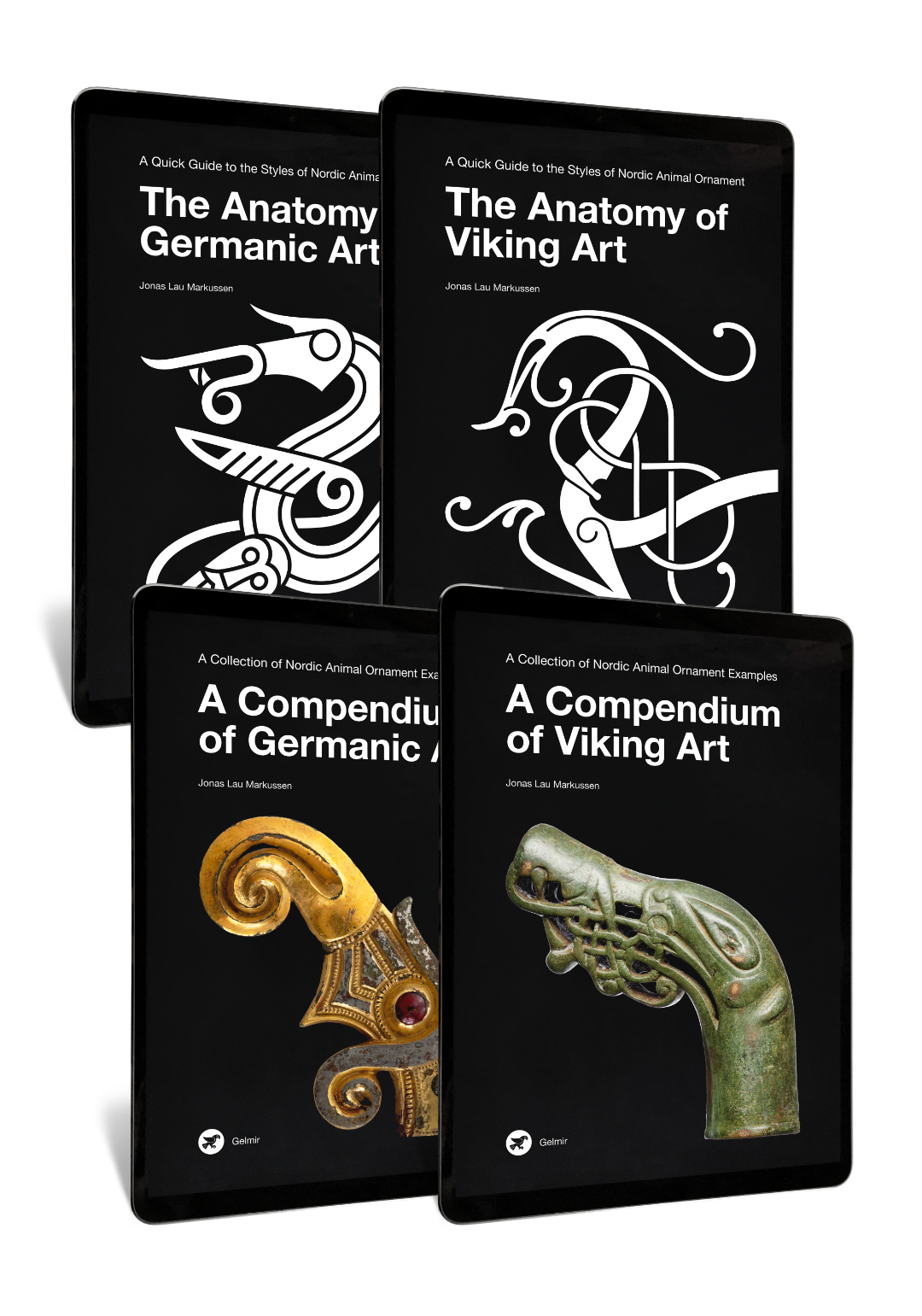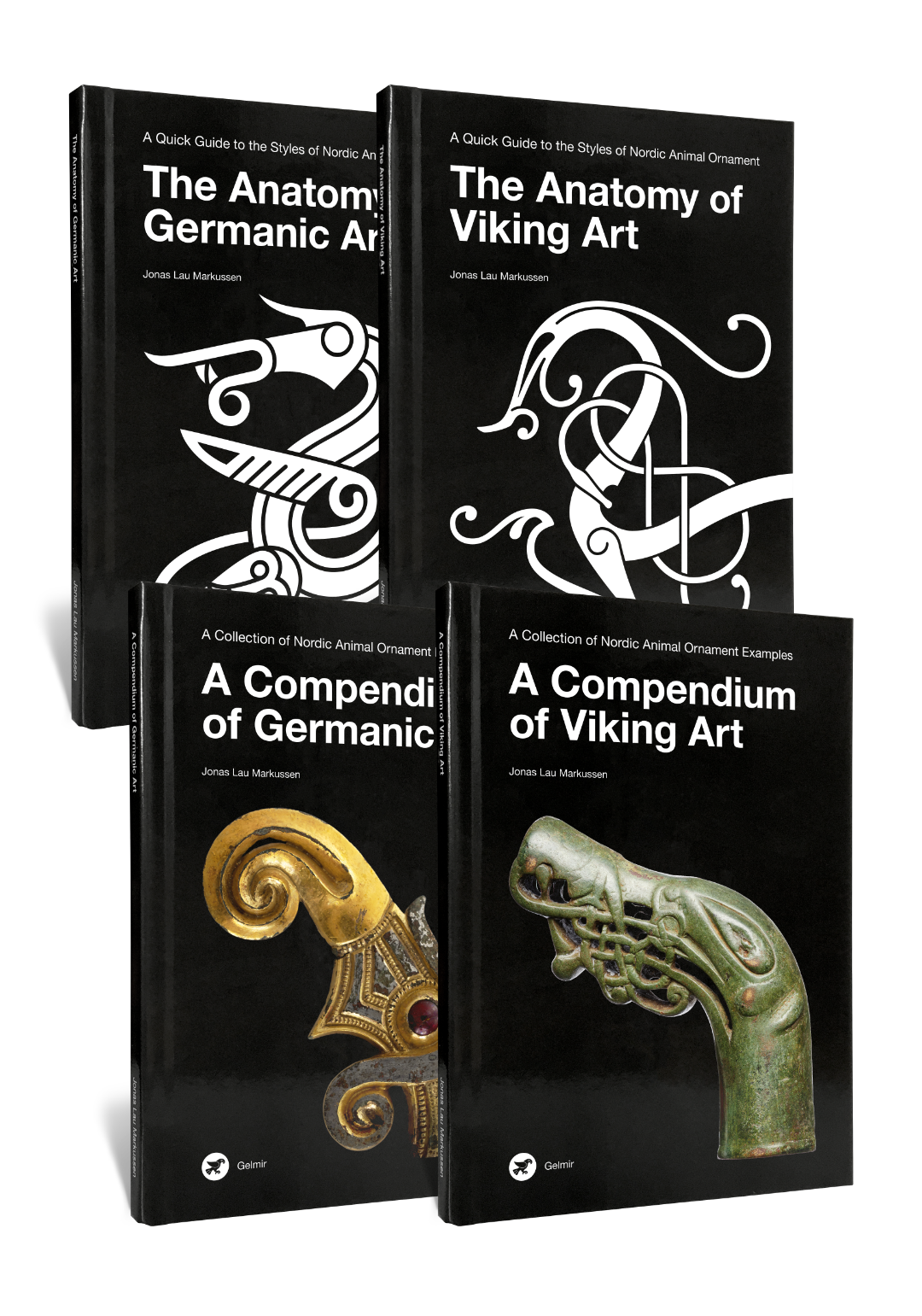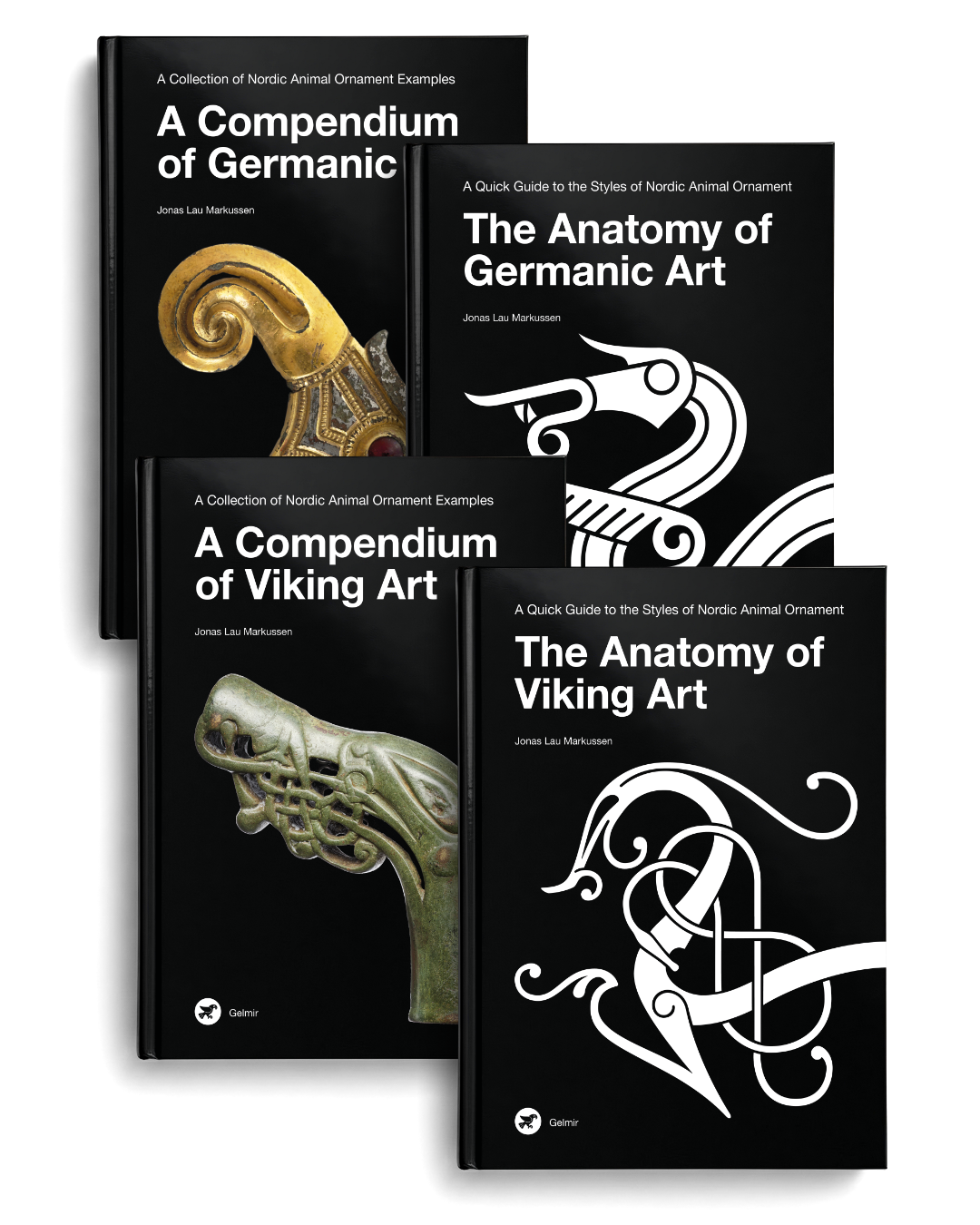Gelmir
Book Set • Viking and Germanic Art
Book Set • Viking and Germanic Art
Couldn't load pickup availability



The Complete Story of Viking Art
— From the Migration Period to the end of the Viking Age (c. 400–1100 CE)
Build a comprehensive, style‑correct reference library in one go.
The Anatomy books teach the rules: shapes, ribbon flow, composition, motifs, timelines, and context.
The Compendium books deliver breadth: hundreds of photos and documentation drawings (many at 1:1), each numbered and cross‑referenced with origin and museum details.
Together, the four volumes let you understand, design, and verify across the full arc from the Germanic Iron Age to the Viking Age.
The Full Evolution of Nordic knotwork
Collectively, these four books map the development of Nordic animal ornament from its emergence in the Migration Period to its late flowering in the Viking Age (c. 400–1100 CE).
You’ll see how motifs (ribbon animals, mask heads, foliage), interlace logic (weave paths and ribbon flow), and composition frameworks evolve and endure from the Germanic Iron Age into the Viking Age, so you can recognise, date, and reconstruct designs with confidence.
The Anatomy Books
Together, the two books explain the characteristics of each style period and show how Scandinavian art evolves across the entire period.
Each style chapter is clear and visual: anatomy (shapes, outlines, ribbon flow), composition diagrams (layout structures and weave paths), typical motif plates, and concise historical context (timelines, maps).
Per‑style artefact lists mirror the Compendium titles, so you can spot a feature, jump to the numbered figures, and rebuild it accurately in your own work.
- The Anatomy of Germanic Art — 88 pages · 17.8 × 25.4 cm · English
- The Anatomy of Viking Art — 84 pages · 17.8 × 25.4 cm · English

The Anatomy Books: Anatomy & characteristics — Each style chapter opens with diagrams introducing the building blocks (shapes, outlines, ribbon flow, and pattern elements) for quick understanding and accurate reconstruction.

The Anatomy Books: Historical context & timeline — Each style chapter pairs a succinct overview with a clear timeline that sets the style within its wider historical moment.
The Compendium Books
Together, these two visual catalogues assemble more than 700 images: museum photos, documentation drawings, and reconstructions. Many artefacts are printed at 1:1 or include clear scales. Every image is numbered and cross‑referenced to a back‑of‑book catalogue with origin, inventory number, and museum/location, ideal for quick comparison, accurate citation, and style‑correct work.
- A Compendium of Germanic Art — 136 pages · 17.8 × 25.4 cm · English
- A Compendium of Viking Art — 208 pages · 17.8 × 25.4 cm · English

The Compendium Books: Artefact photo + documentation drawing — Photo of a carved panel alongside its museum documentation drawing for linework clarity.

The Compendium Books: Artefact + reconstructions — Photo of the Hørning plank, a photograph of the reconstructed church at Moesgaard, and a colour reconstruction illustration of the plank fragment.
How the set works together
- Learn the characteristics in the Anatomy books — style rules, ribbon flow, motif logic, composition diagrams, and timelines.
- Gather references in the Compendium books — browse hundreds of images with numbered figures, provenance, and scale.
- Cross‑reference fast — artefact lists in the Anatomy books titles correspond to figure numbers in the Compendium books.
- Work across eras — trace development from Germanic Iron Age styles into the Viking Age with consistent terminology and format.
Who’s it for
- Designers, illustrators, and tattoo artists who need accurate, style‑correct motifs
- Carvers, metalworkers, and makers building authentic ornament
- Researchers and educators seeking consolidated imagery with provenance
- Reenactors and enthusiasts who want a complete, coherent reference set
All Books
-
Book • A Compendium of Germanic Art
Regular price From €20,00 EURRegular priceUnit price per -
Book • A Compendium of Viking Art
Regular price From €20,00 EURRegular priceUnit price per -
Book • Ringerike Style Essentials
Regular price From €20,00 EURRegular priceUnit price per -
Book • The Anatomy of Germanic Art
Regular price From €20,00 EURRegular priceUnit price per -
Book • The Anatomy of Viking Art
Regular price From €20,00 EURRegular priceUnit price per






